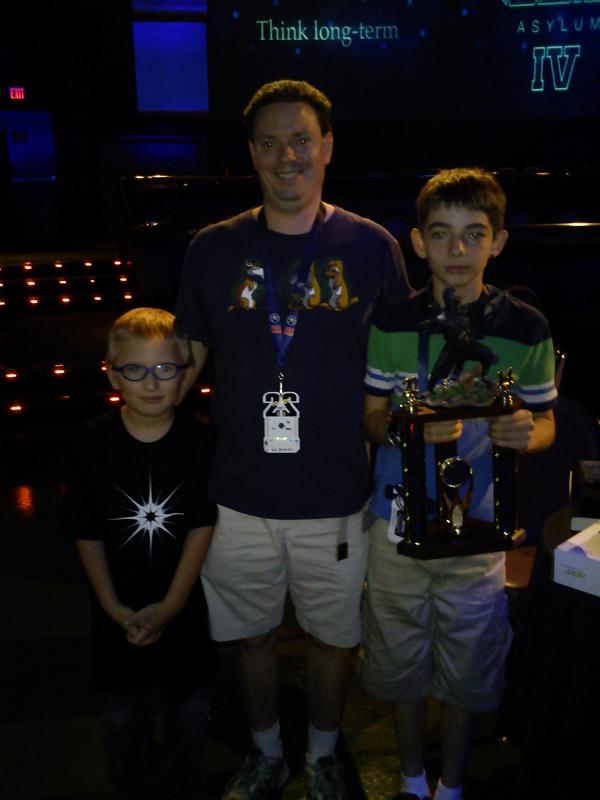Lunch
Bring co-workers together, let off some steam, and renew rivalries between departments with this selection of quick and easy games selected to allow you to teach and play in under 30 minutes.
- Love Letter is a card game of bluffing and card counting with just 16 cards. It handles 2-4 players, but it is best with 4. Also, it comes in a number of different re-themes, so you can get a non-threatening version to appeal more to co-workers.
- Tsuro of the Seas handles 2-8 players. This "last man standing" tile game has compelling artwork, fast rounds, and dead simple rules. A whole game seldom lasts more than 15 minutes so people can jump in with little fear of going over their lunch time. There are simpler versions and expansions, so you can get as much depth as you want in the time allotted.
- Hey That's My Fish plays well for between 2 and 4 players. You should be able to explain rules while setting it up. All about area control, the gradually shrinking board is apt to cause panic even in the normally stone-faced players from Finance.
Date Night
Games that play best with or are designed for just two people can test the limits of your affection or bring you closer together (no warranty either way). Though these games will work at work, teaching might take longer so an hour lunch is preferred for newer players.
- Hive is one of the few abstract games on this list (like chess or checkers). It presents the elegance of chess without a board, and the pieces have heft and make a wonderful clacking sound like Majong tiles.
- Jaipur is a colorful trading game whose tokens and cards make a visually impressive setup. The 2 of 3 mechanics means it is natural to play round after round. This game used to be rare, but it has benefited from a recent reprint.
- Star Wars X-Wing Miniatures Game maxes out the nerd factor. This is as close as you can get to a war game, so check with your significant other before taking the leap. Games run about 45 minutes, and it plays in a space the size of your dining room table. Best of all, there are endless expansions to add iconic and obscure characters to your fleet of ships.
Family/Friends Game Night
Have more than two? Hate Monopoly as much as I do? This mix of competitive and cooperative games are sure to show you what the modern board gaming renaissance is all about.
- Forbidden Desert is a cooperative game where you play against the game to avoid thirst, storms and the heat to get out of the desert alive. The mechanics and components are top notch, and it plays in under an hour.
- In King of Tokyo, players take the role of giant monsters vying for control of Tokyo. A fast paced dice game, the randomness and ridiculousness of it all is a hit.
- Card game The Builders: Middle Ages is a great worker placement game: hire and set workers to build a town. The rules are simple, but the gameplay is complex. This definitely benefits from replayability and the tin means it is sturdy enough to go anywhere.
- Love Scrabble but have that one friend that outstrips you every single game? Try Qwirkle for scrabble like crosswords without the burden of words. It is more puzzle than game, depending on how cut-throat you get.
- Ticket To Ride: Europe is rummy with a board, and this edition of the game is fantastic. I learned more geography from this game than I did in grade school, and the artwork is fantastic. Expansions are available and cover alternate maps and expanded ticket options. It even has an App version you can pass-and-play if you don't want the fancy box.












































